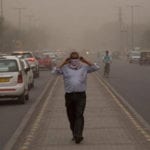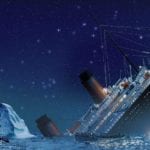 Technology
Technology  Technology
Technology  Humans
Humans 10 Everyday Human Behaviors That Are Actually Survival Instincts
 Animals
Animals 10 Animals That Humiliated and Harmed Historical Leaders
 History
History 10 Most Influential Protests in Modern History
 Creepy
Creepy 10 More Representations of Death from Myth, Legend, and Folktale
 Technology
Technology 10 Scientific Breakthroughs of 2025 That’ll Change Everything
 Our World
Our World 10 Ways Icelandic Culture Makes Other Countries Look Boring
 Misconceptions
Misconceptions 10 Common Misconceptions About the Victorian Era
 Mysteries
Mysteries 10 Strange Unexplained Mysteries of 2025
 Miscellaneous
Miscellaneous 10 of History’s Most Bell-Ringing Finishing Moves
 Technology
Technology Top 10 Everyday Tech Buzzwords That Hide a Darker Past
 Humans
Humans 10 Everyday Human Behaviors That Are Actually Survival Instincts
 Animals
Animals 10 Animals That Humiliated and Harmed Historical Leaders
Who's Behind Listverse?

Jamie Frater
Head Editor
Jamie founded Listverse due to an insatiable desire to share fascinating, obscure, and bizarre facts. He has been a guest speaker on numerous national radio and television stations and is a five time published author.
More About Us History
History 10 Most Influential Protests in Modern History
 Creepy
Creepy 10 More Representations of Death from Myth, Legend, and Folktale
 Technology
Technology 10 Scientific Breakthroughs of 2025 That’ll Change Everything
 Our World
Our World 10 Ways Icelandic Culture Makes Other Countries Look Boring
 Misconceptions
Misconceptions 10 Common Misconceptions About the Victorian Era
 Mysteries
Mysteries 10 Strange Unexplained Mysteries of 2025
 Miscellaneous
Miscellaneous 10 of History’s Most Bell-Ringing Finishing Moves
10 Narrowly Averted Disasters That Nearly Shook The World
Think you’re safe? Think again. The world has shown time and again that it wants all of us dead, the quicker the better. Hurricanes, floods, air disasters, terror attacks—the list of ways the universe is trying to kill us is long and terrifying.
But major disasters don’t always go to plan. Sometimes, we come within seconds of a world-shaking catastrophe, only to be saved by quick thinking, good judgment, or just dumb luck. It’s a wonder any of us are still alive to read this.
10A Submarine Fire Nearly Causes The Next Chernobyl
2011
The 1986 Chernobyl disaster in Ukraine was the worst nuclear accident in history. Around 50 people died, and thousands got a big surprise dose of radiation. Twenty-five years later, Russia nearly topped it when a fire broke out on a nuclear submarine. Aside from two reactors to power it, the sub was equipped with mines, torpedoes, and a clutch of missiles, each armed with four nuclear warheads.
At the time, the submarine was in dock, undergoing repairs. Stupidly, those working on it allowed white hot sparks to come into contact with dry wooden scaffolding, triggering a hugely dangerous blaze. Fire quickly swamped the craft, building into an inferno. Reporting on the incident, widely respected Russian magazine Vlast claimed that if the fire had caused one of the torpedoes to explode, it could have threatened the warheads, leading to “an extremely dangerous nuclear accident.”
Although the craft was parked at the remote Roslyakovo docks 1,500 kilometers (900 mi) north of Moscow, the region is still populated enough to render a nuclear detonation or radiation spill catastrophic. Since the authorities refused to evacuate the area, thousands would have been affected at a bare minimum. For a whole day, this was a very real possibility.
Fortunately, firefighters managed to get the blaze under control by partially sinking the sub, and disaster was averted. Less fortunately, this was far from an isolated incident. Russia has a stupendously bad track record with nuclear submarine accidents, so Europe’s next nuclear disaster could still be just around the corner.
9Britain Nearly Shoots Down A Passenger Plane Over London
2001
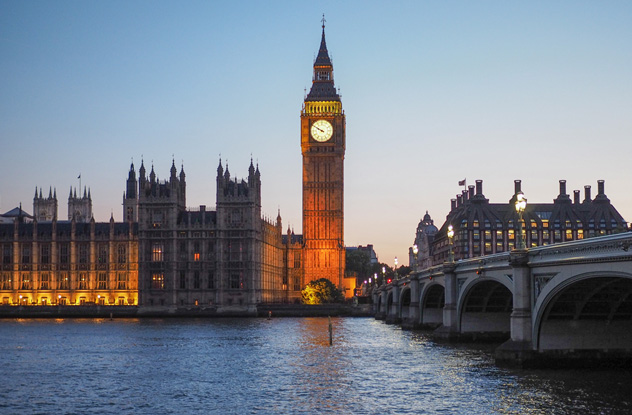
In the immediate aftermath of 9/11, the Western world was alert to hijacked planes. When an unauthorized passenger plane entered London airspace and refused to respond to urgent messages, UK intelligence feared the worst. It could have been headed for Westminster, 10 Downing Street, or Oxford Circus. Thousands of lives could have been threatened. An RAF fighter jet was quickly dispatched. Its mission: to intercept and possibly shoot down the airliner.
In Downing Street, Prime Minister Tony Blair had just moments to make the call. He could either have blasted the plane out the sky before it reached central London or crossed his fingers and hoped for the best. According to a later account he gave, Blair came within seconds of giving the order to fire. But at the last moment, his nerve gave out. He couldn’t do it.
It was the right call. A minute later, contact was reestablished. A technical fault had caused the plane to stop responding. It was full of nothing more deadly than returning tourists. Had Blair taken the decision to shoot it down, hundreds of innocent people would have died, not including the damage done by wreckage falling on a major city.
8Aum Shinrikyo Spray Anthrax Over Tokyo
1993

On June 29, 1993, residents living near the headquarters of religious cult Aum Shinrikyo in Kameido, Tokyo, complained of a strange smell. The next day, people fell ill with nausea and vomiting. The day after that, a rooftop device belonging to the cult sprayed a fine mist through the air. An oily black substance clung to buildings and skin. It fanned out over the entire ward, drifting deep into the city. Eventually, authorities convinced the group to stop. They packed up operations. The machine vanished, and no one had any idea what that black substance was.
Two years later, Aum Shinrikyo gassed the Tokyo subway with sarin, killing 12 people and injuring over 5,500. With the group implicated in other chemical attacks, authorities decided to analyze samples of the black substance collected in 1993. When the results came back, they got a nasty shock. The device on the rooftop had been releasing clouds of aerosolized anthrax.
One of the deadliest diseases known to man, anthrax doesn’t mess around. Releasing a steady cloud of it over a crowded city should have resulted in thousands of deaths. It should have been the deadliest terror attack in history. And maybe it would have been, if Aum Shinrikyo hadn’t accidentally used a strain developed for vaccinations. Instead of killing thousands, the worst their attack did was actually immunize their victims against the disease.
7Britain Comes Within One Minute Of Its Worst Rail Disaster
2015

On the evening of March 7, 2015, a crowded steam train ran a red light in the English county of Wiltshire. Run by a company specializing in retro railway tours, the train was equipped with an automatic brake that should have forced it to a stop at the junction. The driver, however, disabled the system. The train sailed through the light and across another track, having barely slowed down. None of the 300-odd tourists onboard realized at the time how close they’d come to being involved in the worst rail disaster in British history.
Less than 60 seconds beforehand, an express train carrying 300–400 people had gone through the junction at 110 kilometers (70 mi) per hour. The red light the steam train ran had been to warn the driver of the oncoming express. Had each train’s timing been just slightly off, they would have collided with enough force to derail them both. While it’s impossible to say how many might have died, the BBC later said it could have been the worst crash in British history. Even if it didn’t quite scale those terrible heights, it still would’ve been deadly enough to scar the entire nation.
6A Waste Disposal Firm Accidentally Creates A Radioactive Death Ray
2002
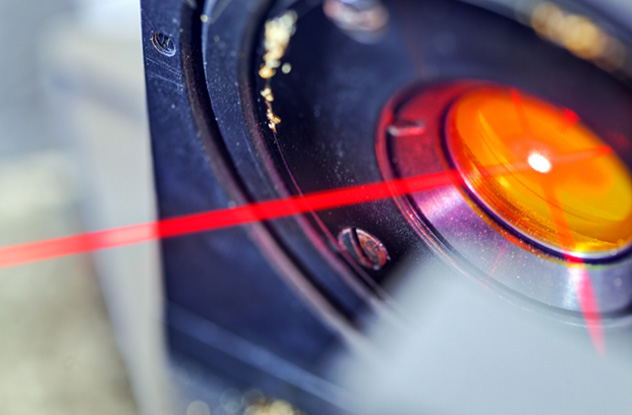
No one in the north of England would have noticed the truck passing on March 11, 2002. Registered to the firm AEA, it was transporting medical equipment 200 kilometers (130 mi) across the country for disposal. Yet this nondescript truck almost went down in British history. Had a container in its back been stored at a slightly different angle, it could have shot the public with poisonous radiation.
The equipment the truck was carrying was highly radioactive. Workers had placed it in a 2.5-ton container then forgot to plug up one end. The result was a narrow beam of radiation projecting out 100–1,000 times above a safe dose. Had the container been laid horizontally, the beam would have extended 300 meters (1,000 ft) out across the English countryside wherever the truck went, potentially injuring anyone in its path. Had the truck crashed, the container could have fallen and poisoned those at the accident site. At the very least, it could have injured those charged with loading and unloading it at either end of its journey.
Prosecutors later said it was “pure good fortune” no one was dangerously contaminated during the drive. For their part in this near-disaster, AEA were forced to pay a £151,000 fine.
5ETA Tries To Explode A Gigantic Bomb In Central Madrid
2004
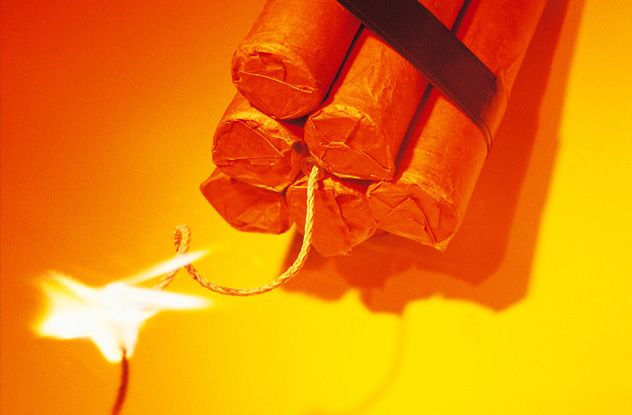
Before they declared a “permanent cease-fire” in 2011, Basque separatist group ETA was one of European terrorism’s major threats. In 1987, they murdered 21 Spanish civilians in a shopping mall bomb attack, the worst attack in the country’s post-Franco history. But in 2004, they nearly topped even that gruesome assault. Two members filled a van with 30 kilograms (65 lb) of dynamite and 500 kilograms (1,100 lb) of chloratite and hit the road. Their goal was to explode their gigantic bomb in the heart of central Madrid.
It would’ve been the biggest bombing in ETA’s history. The force of the explosion would have endangered the lives of anyone within a mile of the van. It would also have caused millions of euros of damage. Fortunately, the van never made it to the city. When it reached Cuenca, bored officers pulled it over for a routine check and discovered the enormous bomb in the back.
Scarily, this isn’t the only time ETA nearly caused untold carnage in the Spanish capital. In 1999, two vans were intercepted on their way to blowing up the Torre Picasso, a building home to 5,000 workers.
4Soviet Scientists Nearly Kill An Entire Russian City
1979

During the Cold War, the Russian city of Sverdlovsk (now known as Ekaterinburg) was suspected of being home to a Soviet bioweapons facility. Although NATO and its allies monitored the military base there, they never found any evidence to confirm their suspicions. Then, in 1992, Boris Yeltsin admitted they’d been stockpiling killer germs in Sverdlovsk. He also admitted something far more disturbing. In 1979, some of these germs had accidentally been released.
After workers forgot to replace an exhaust in a filtration system, an aerosolized version of anthrax had escaped into the air. Unlike Aum Shinrikyo’s useless strain in Tokyo, this batch was highly dangerous. Downwind of the facility, 94 people were infected, with 64 dying from the illness. Tragic as this is, it could have been much worse. In an interview with PBS’s Frontline, the former first deputy chief of the Soviet’s bioweapons program, Dr. Kanatjan Alibekov, said they got extremely lucky with the wind that day. Had it been blowing in the opposite direction, toward Sverdlovsk, he estimated hundreds of thousands would have died.
3The IRA Nearly Assassinates The British Prime Minister
1984

It’s kind of forgotten today how terrifying the IRA really were. Their attacks caused unprecedented carnage in the UK, and in 1991, they even managed to shell a cabinet meeting in central London with mortars. But their greatest achievement nearly came seven years earlier. On October 12, 1984, a bomb planted in Brighton’s Grand Hotel came within seconds of killing Prime Minister Margaret Thatcher.
The attack was timed to coincide with the annual Conservative Party conference, when the hotel would be crawling with government ministers. Bomber Patrick Magee had placed a 500-kilogram (1,000 lb) explosive in room 629 and timed it to go off in the middle of the night. The explosion ripped through walls and floors. It blew chunks of concrete out into the street. It badly damaged the suite Thatcher was staying in and probably would have killed her, had she not been awake and away from the blast working on her speech.
The first assassination of a sitting prime minister since 1812 would have altered the course of British history. Any future peace talks on Northern Ireland would have been completely derailed. As it was, the deaths of five people in the blast were still a tragedy but not quite the epoch-shaking event it nearly was.
2A Dam Failure Nearly Causes The US’s Worst Ever Disaster
1971
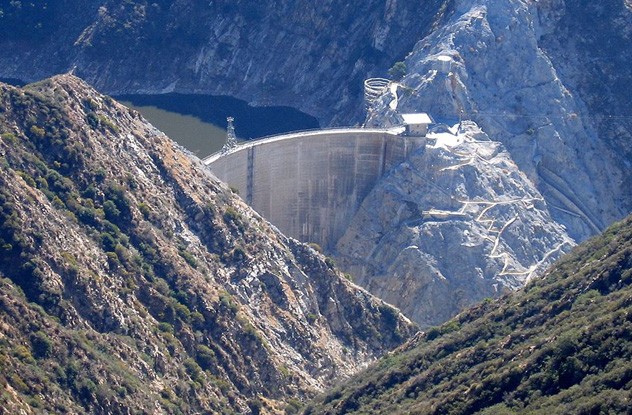
It killed 64 people, injured over 2,500, collapsed entire hospitals, and caused millions of dollars’ worth of damage. It’s hard to see how the 1971 San Fernando Earthquake could possibly have been any worse. Yet it was very nearly the worst disaster in the history of the United States. At the Van Norman reservoir, the quake caused the lower dam to come within seconds of failing. Had it broken, the resulting rush of water would have killed more people than the Pearl Harbor attack, 1906 San Francisco Earthquake, 9/11, and the 1900 Galveston Hurricane combined.
In the short 12 seconds of the quake, the top 10 meters (30 ft) of the dam disintegrated. By a stroke of luck, the reservoir was only half full that day, preventing a titanic flood. Still, the water level wound up a mere 2 meters (6 ft) from the top, and continued aftershocks kept causing more concrete to fall off. Around 80,000 people had to be evacuated from the San Fernando Valley below in an emergency operation lasting three days. In all that time, the only thing stopping a total dam collapse was a few feet of freeboard.
Had the dam been full at the time of the quake, or had the freeboard given out afterward, the loss of life would have been catastrophic. A UCLA study later estimated the dam’s failure would have killed a minimum of 71,600 people and perhaps as many as 123,400.
1An Asteroid Nearly Wipes Out The Largest City On Earth
1908

At 7:17 AM on June 30, 1908, a burning hunk of rock blasted across the skies of Russia, finally exploding with the force of 1,000 Hiroshima bombs. An area of trees spanning 2,000 square kilometers (800 mi2) was instantly flattened. People were knocked to the ground over 60 kilometers (40 mi) away. The blast was felt on the other side of the continent.
The Tunguska asteroid remains the biggest modern impact. By sheer fluke, it landed in a remote stretch of wilderness. Almost nobody was hurt, although a handful of deaths were recorded. A tiny twist of cosmic fate, and things could have been a lot worse. While the Tunguska explosion would have been devastating over any town or city, if it arrived six hours earlier, it would have hit the largest city on Earth: London.
At the dawn of the 20th century, London was the seat of an empire. With 6.5–7.5 million inhabitants, it dwarfed even New York. Half the world was run from its government offices. Its size and importance was like modern Beijing, Tokyo, and Washington, DC, combined. A Tunguska impact would have destroyed everything.
According to the BBC, everything within today’s M25—an area covering 200 square kilometers (80 mi2)—would have been wiped out. The death toll would have been in the millions. The biggest empire on Earth would have ground to a halt. The global economy would have crashed hard. The aftereffects would have shaken the entire world.



